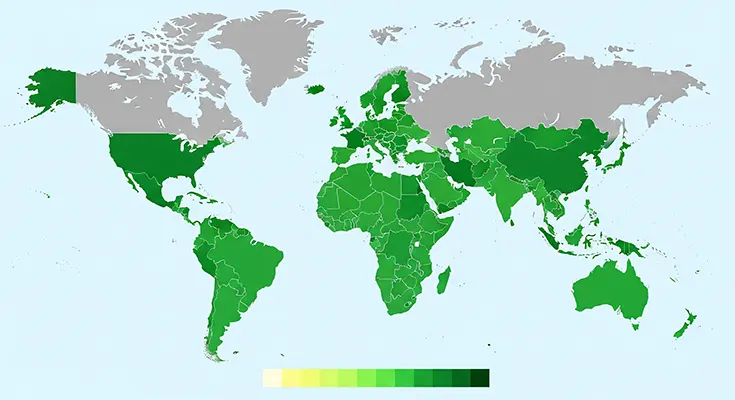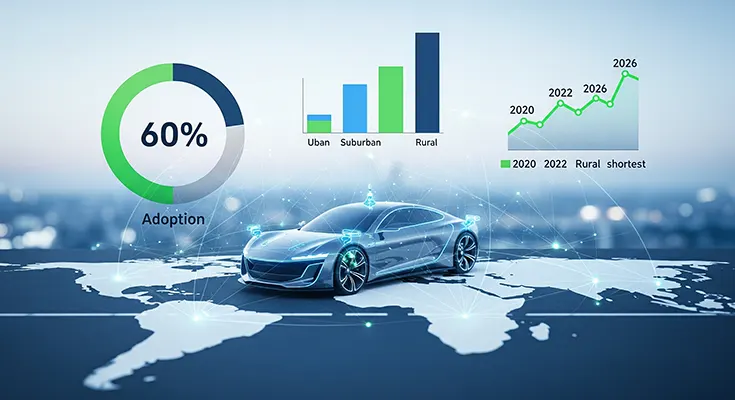The global automotive landscape is in the midst of a historic transformation, with electric vehicles (EVs) at the forefront. As nations worldwide commit to ambitious climate goals and technological innovation, the EV market is experiencing explosive growth. While total sales continue to climb, a closer look at the market share by country reveals a diverse and competitive landscape, with different regions leading in various aspects of the EV revolution.
The Undisputed Leader: China’s Dominance
When it comes to sheer volume and market share, China is the undisputed global leader. The country’s electric vehicle market is a colossus, with EV sales reaching unprecedented levels. In 2024, China’s EV sales accounted for nearly two-thirds of the global total, with electric cars making up almost 50% of all new car sales in the country. This remarkable growth is driven by a combination of strong government policies, including generous subsidies and a credit system for automakers, and a vibrant domestic industry producing a wide range of affordable and technologically advanced models. Chinese brands, such as BYD and SAIC, have become global powerhouses, not only dominating their home market but also expanding their presence internationally.
Europe’s Charge Ahead
Europe remains a critical and dynamic market for electric vehicles. While not matching China’s raw sales volume, many European countries boast some of the highest EV adoption rates in the world. This is a testament to the continent’s stringent emissions regulations and a public increasingly embracing sustainable transportation.
- Norway: The small Nordic nation of Norway is a global benchmark for EV penetration. With nearly 95% of new car sales being electric in 2024, Norway is on track to achieve its goal of 100% zero-emissions new car sales by 2025. This success is the result of long-standing policies that include zero import taxes on EVs, tax breaks, and a comprehensive charging infrastructure.
- Germany and the UK: These countries are leading the charge among Europe’s largest economies. While facing some policy shifts, Germany and the United Kingdom have seen significant growth in their EV fleets, supported by a mix of incentives and expanding charging networks. The UK, for example, saw its EV sales share climb to nearly 30% in 2024, driven by a vehicle emissions trading scheme.
- The Netherlands and Sweden: These nations consistently rank high in per capita EV adoption, with strong public interest and supportive government policies pushing market shares well above the global average.
The United States: Accelerating but with Challenges
The United States holds the second-largest EV fleet globally, behind China. However, its market share of new car sales lags behind both China and leading European countries. The US market is characterized by strong growth but also by regional differences. States like California are at the forefront of adoption, with EVs making up over a quarter of new car sales. Nationwide, the Inflation Reduction Act (IRA) has played a crucial role, providing tax credits for consumers and supporting domestic EV and battery manufacturing. The US market, however, is also seeing a shift, with a preference for larger electric SUVs and trucks, reflecting consumer preferences and a lower availability of smaller, more affordable models.
Emerging Markets: The Next Frontier of Growth
While China, Europe, and the U.S. dominate the current market, the next wave of EV growth is emerging from Asia and Latin America. These regions, though starting from a lower base, are seeing some of the fastest growth rates in the world.
- Southeast Asia: Countries like Thailand, Indonesia, and Vietnam are rapidly scaling up their EV markets. Thailand’s EV sales share climbed to 13% in 2024, while Indonesia’s tripled, buoyed by supportive policies and a push to attract foreign EV investment. The focus in these markets is often on two- and three-wheeled EVs, which are a more affordable entry point for many consumers.
- Latin America: Brazil is leading the charge in this region, with EV sales more than doubling in 2024. Other countries like Colombia and Costa Rica are also showing promising signs of adoption, with governments implementing policies to promote EV growth.
A Look Ahead
The global electric vehicle market is dynamic and ever-evolving. While the major players like China, Europe, and the US will continue to drive the market, the accelerating adoption in emerging economies signals a truly global shift toward electric mobility. As battery technology improves, prices fall, and charging infrastructure expands, the global EV market is poised to grow to over 20 million units sold in 2025, representing more than a quarter of all new car sales worldwide. The country-by-country data confirms that while total sales are surging, the strategies, policies, and consumer preferences in each nation are creating a unique and fascinating tapestry of the global EV revolution.













